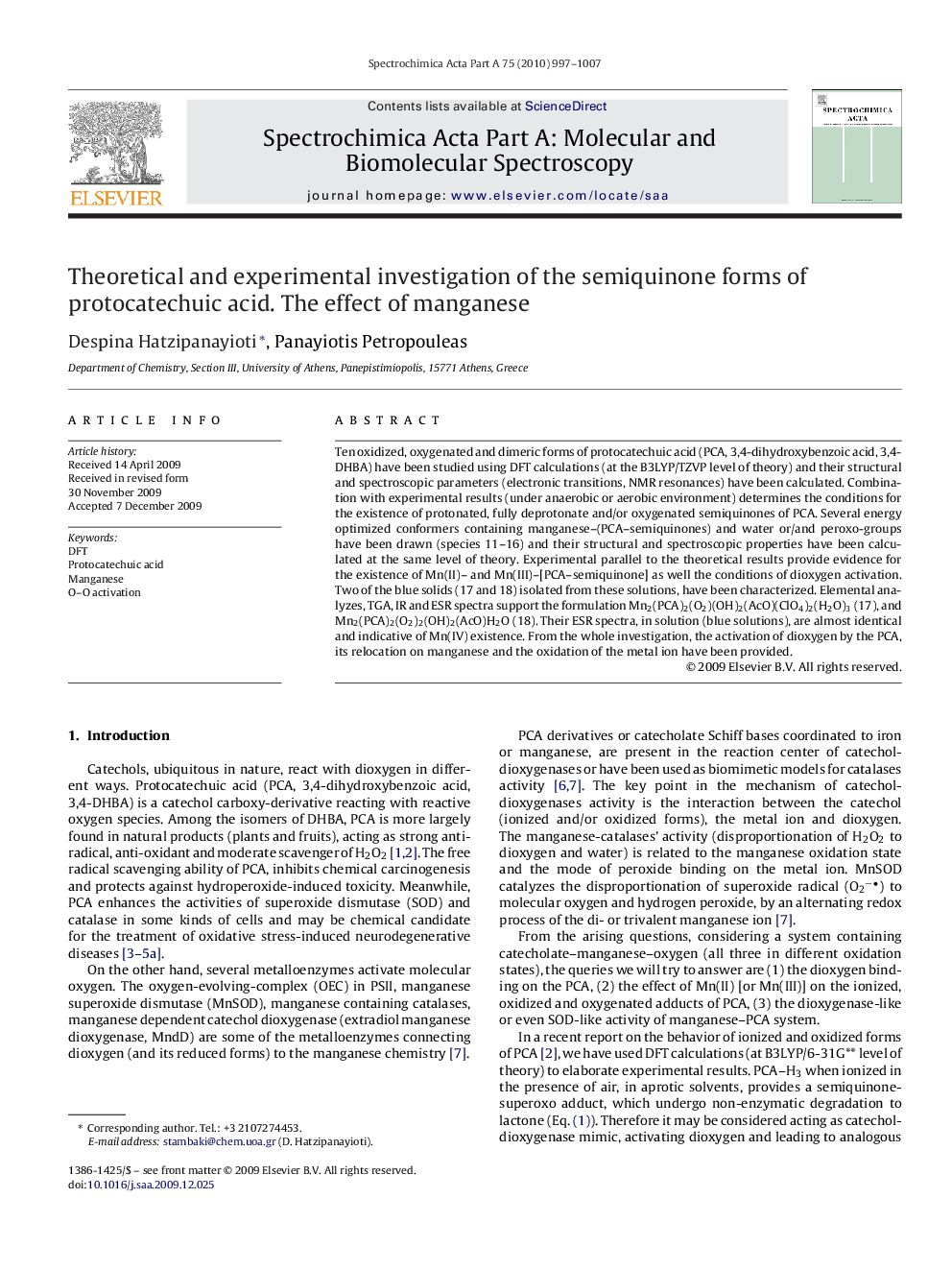| Article ID | Journal | Published Year | Pages | File Type |
|---|---|---|---|---|
| 1236933 | Spectrochimica Acta Part A: Molecular and Biomolecular Spectroscopy | 2010 | 11 Pages |
Ten oxidized, oxygenated and dimeric forms of protocatechuic acid (PCA, 3,4-dihydroxybenzoic acid, 3,4-DHBA) have been studied using DFT calculations (at the B3LYP/TZVP level of theory) and their structural and spectroscopic parameters (electronic transitions, NMR resonances) have been calculated. Combination with experimental results (under anaerobic or aerobic environment) determines the conditions for the existence of protonated, fully deprotonate and/or oxygenated semiquinones of PCA. Several energy optimized conformers containing manganese–(PCA–semiquinones) and water or/and peroxo-groups have been drawn (species 11–16) and their structural and spectroscopic properties have been calculated at the same level of theory. Experimental parallel to the theoretical results provide evidence for the existence of Mn(II)– and Mn(III)–[PCA–semiquinone] as well the conditions of dioxygen activation. Two of the blue solids (17 and 18) isolated from these solutions, have been characterized. Elemental analyzes, TGA, IR and ESR spectra support the formulation Mn2(PCA)2(O2)(OH)2(AcO)(ClO4)2(H2O)3 (17), and Mn2(PCA)2(O2)2(OH)2(AcO)H2O (18). Their ESR spectra, in solution (blue solutions), are almost identical and indicative of Mn(IV) existence. From the whole investigation, the activation of dioxygen by the PCA, its relocation on manganese and the oxidation of the metal ion have been provided.
